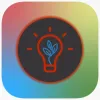Take a look inside 7 images
Redwood AR
Pros: Great 3D graphics look super cool and help kids feel immersed in the experience.
Cons: It's difficult to match the questions to a kid's level, and there's no support for learning from wrong answers.
Bottom Line: Teaching math with AR offers a unique in-road, but the lack of learning supports limits the overall value.
Use Redwood AR to make math come alive in a unique way. The 3D graphics and game approach have the potential to grab students who struggle with more traditional -- and flat -- teaching methods. Because there's no way to customize or track progress, Redwood AR is best for individual free play. To help round out learning, teachers can preview the games and create lessons that build on the concepts the app introduces.
Introduce the app with some guiding questions: Is using augmented reality helpful to the learning process? Why, or why not? Is there a specific activity that stands out? Then, let kids play and explore to spark excitement. After a set amount of time, have kids regroup and discuss the answers to the guiding questions. Build on and extend the activities that relate most to your learning goals.
Redwood AR uses augmented reality to engage students in math-based activities. Questions about nature, counting, patterns, multiplication, and more are integrated with 3D graphics that get placed right in the room with you. For the AR to work, students must grant Redwood AR access to their device's camera and find a clear, flat area in their environment where they can place the graphics. Once they're placed, tap on the campfire to start the first math adventure. Text-based directions guide students to move their device and discover all the 3D graphics around them as they count or tap to gather what they see. Later questions introduce other concepts like multiplication and basic facts about animals and nature. Complete a quest to unlock the next world on the map and earn "hydro" points. At any point, tap the cube icon to play in pattern mode and choose which shape completes a 3D pattern. The backpack icon takes students to an inventory of 3D objects they can unlock by spending points they've earned. Questions are text-based only, so students need to be strong readers to play.
Fun augmented reality activities do a nice job of sneaking in math concepts -- getting away from boring worksheets -- but the overall app experience has some rough edges to smooth out. Seeing those 3D images appear all around is certainly cool, and will likely engage and excite students. Even though Redwood AR's graphics look great, they're missing some controls, like the ability to resize them to fit your space better. The quests include a mix of questions about animals, nature, and different math concepts, which brings nice variety but also makes it hard to place in terms of age. For example, in a single quest, kids may get questions about identifying a color, counting by twos, and doing multiplication with large numbers. There's also no feedback or way for kids to learn from mistakes. The patterns game nicely uses AR to encourage 3D spatial awareness, but it isn't explained very well; it may take some students a while to figure out exactly what they're supposed to do. Overall, Redwood AR has potential to inspire some students to explore math in a new way, but it could use some improvements to truly shine.
















